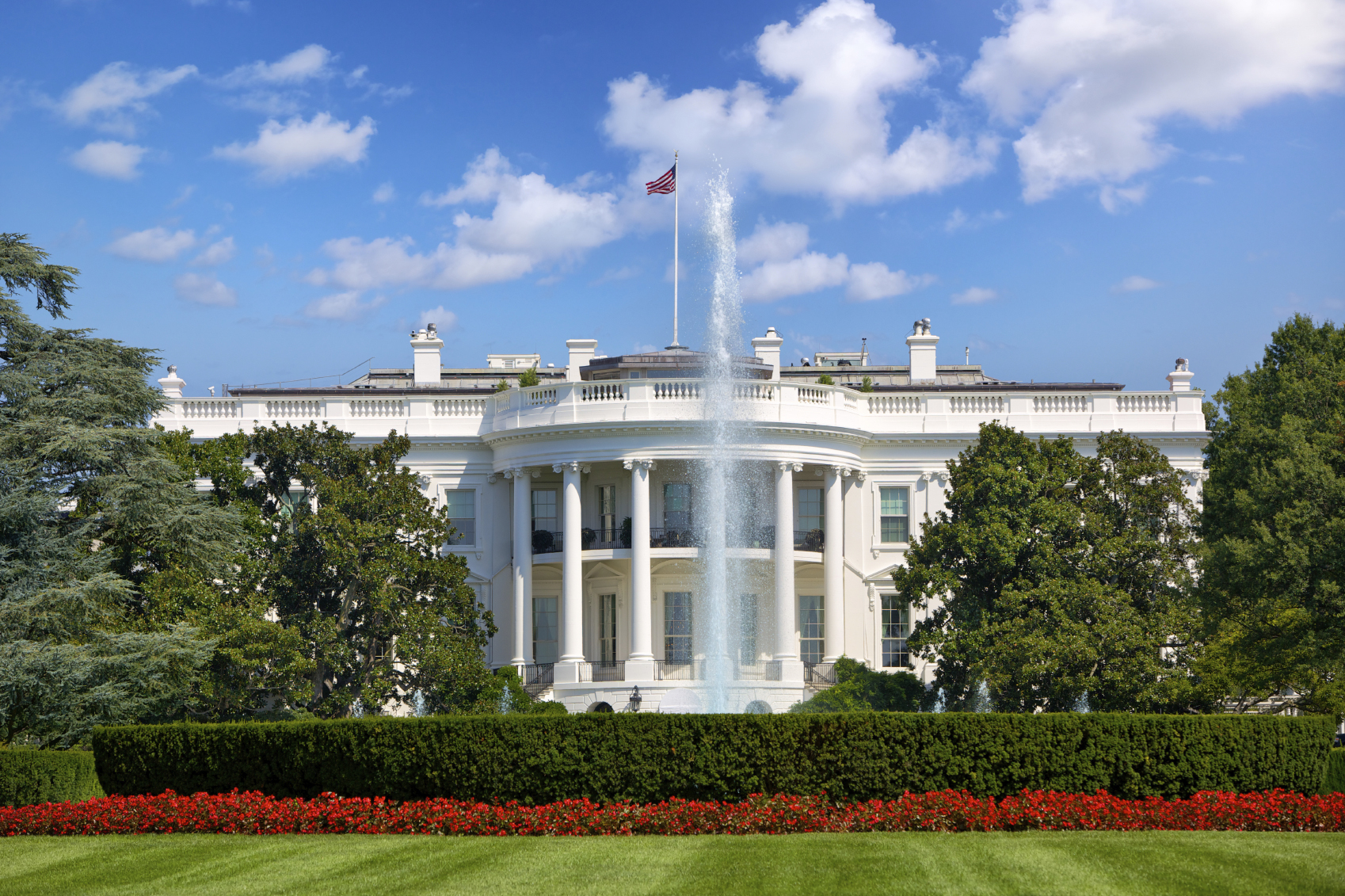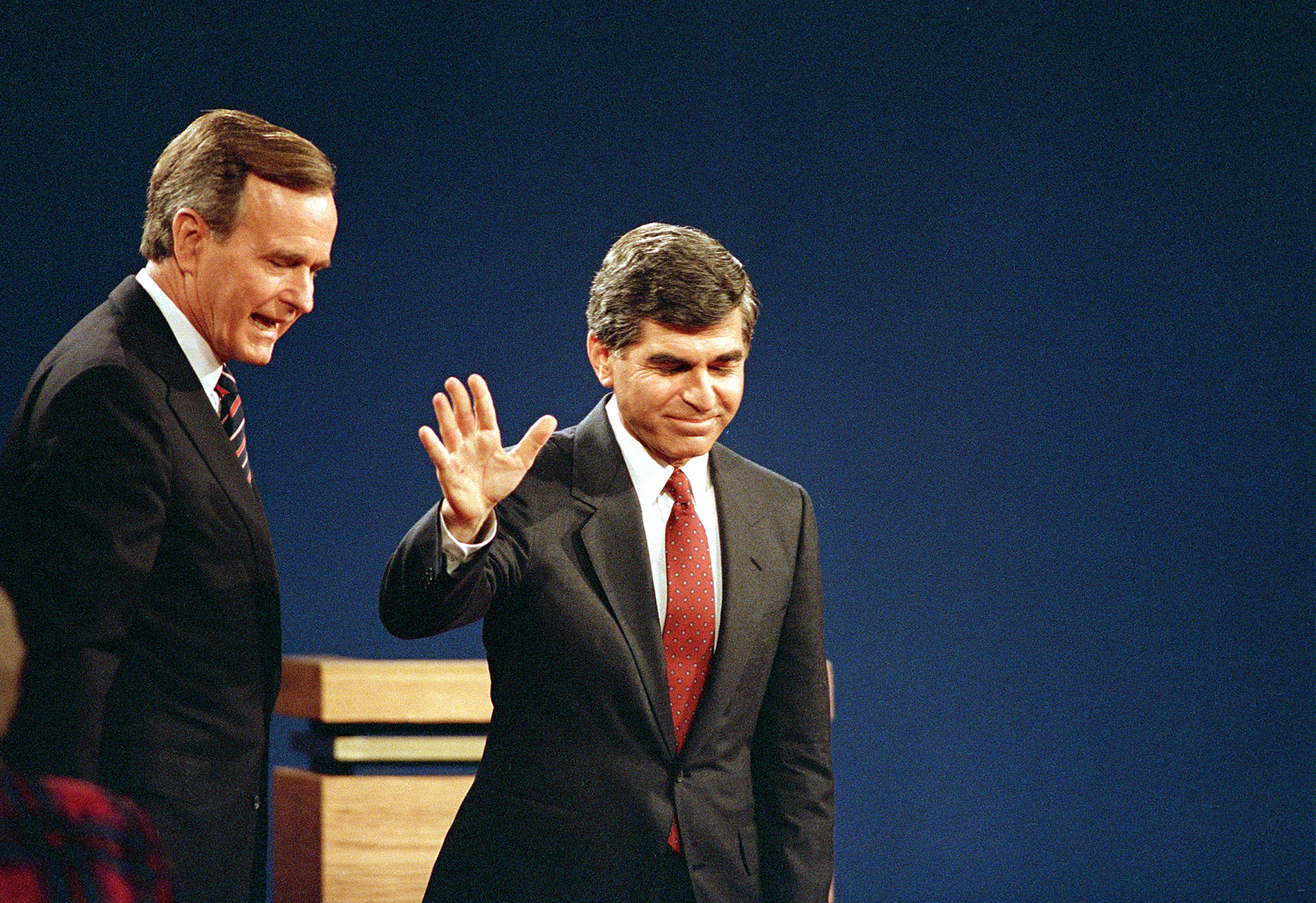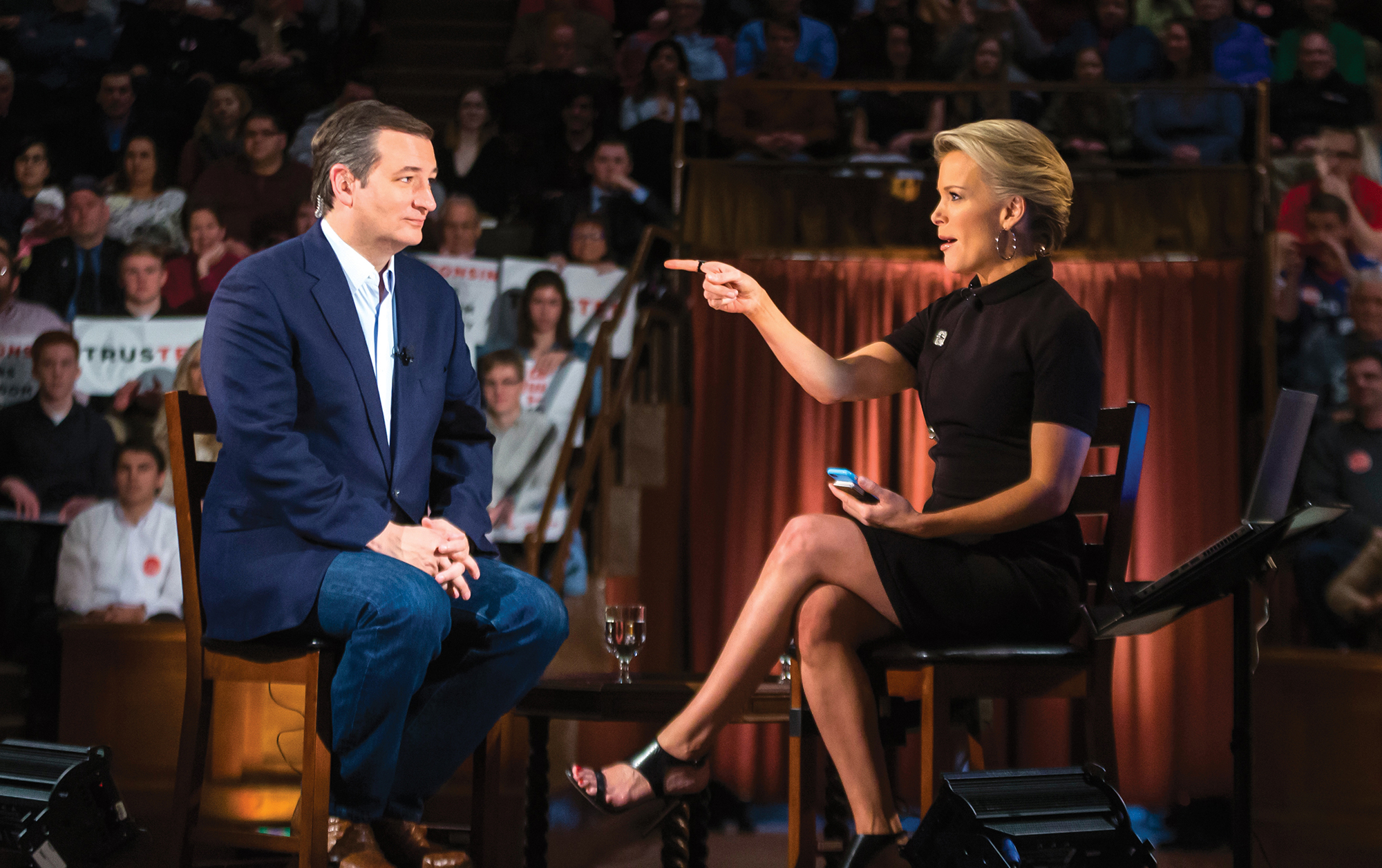The closer Donald Trump gets to the Republican presidential nomination, the worse his position in the general election appears. His unfavorable ratings are spiking, he is collapsing among female voters and he is unpopular with the young people and minorities who twice helped elect Barack Obama president.
In match-ups with likely Democratic nominee Hillary Clinton, Trump is down but not out. If Trump is the Republican nominee, he will face a difficult path to the White House, but not quite an impossible one.
Let’s not treat the current polling as if it is written in stone. When Trump announced he was running in June, the two most recent national polls were a Monmouth survey that showed him at 2 percent and an NBC News/Wall Street Journal poll that found him at 1 percent.
Related Story: http://www.washingtonexaminer.com/article/2588132
None of the nationwide polls of Republican voters included in the RealClearPolitics average for the first six months of 2015 had Trump in double digits. That changed almost immediately after he got into the race. Less than a year later, he averages better than 40 percent of the national GOP vote and the occasional polling has him hovering around 50 percent.
When Trump was getting ready to throw his hat into the ring, FiveThirtyEight’s Harry Enten cited an average of three national polls to claim a “whopping 57 percent of Republicans have an unfavorable view of Trump” in a story titled “Why Donald Trump isn’t a real candidate, in one chart.”
“Taking into account name recognition, Trump’s net favorability rating (favorable minus unfavorable) of -32 percentage points stands out for its pure terribleness at this point in the campaign,” Enten continued. “Like his unfavorable rating, it is by far the worst of the 106 presidential candidates since 1980 who are in our database.”
He concluded that Trump had a better chance of appearing in a “Home Alone” sequel or playing in the NBA Finals than being the Republican nominee.
These numbers improved as Trump’s campaign progressed, even if he still lags behind past front-runners’ intra-party popularity. He stands the best chance of any candidate currently running of winning the Republican nomination through the primary process, and will enter the convention with at least plurality support.

If Donald Trump is the Republican nominee, he will face a difficult path to the White House, but not quite an impossible one. (iStock)
If Trump is a weak front-runner compared to the overwhelming national advantages once enjoyed by Ronald Reagan, George W. Bush or even Bob Dole, he also has been strong enough so far to overcome the combined efforts of both the Republican establishment and the conservative movement to bring him down.
Not only is Trump a “real” candidate, he has been the clear Republican front-runner for months, with only a handful of interruptions in a field that once included as many as 17 notable contenders. Past national poll leaders Jeb Bush, Scott Walker and Ben Carson are all gone from the race.
There’s no guarantee Trump can replicate this feat with the general electorate. Voters in the general election will be more diverse than Republican primary participants and might be less forgiving of Trump’s comments or less likely to view political incorrectness as “telling it like it is.”
Trump has been campaigning longer now, so perhaps perceptions are more entrenched. There will be no honeymoon period in which the national media is unsure of whether to take him seriously as a candidate. His favorability deficit with some key voting blocs is steeper than it ever was with just Republicans.
But we do know that people used favorability ratings and early poll numbers to confidently predict Trump couldn’t win before and that those predictions were wrong. We also know that a lot can change between now and the general election.
As late as June 1992, Bill Clinton was running third in many national polls and Ross Perot was in first place. “The word among Washington insiders is short and sweet,” The New York Times reported on June 23 of that year. “We’re headed to the House of Representatives.” November told a different story.
Michael Dukakis came out of the 1988 Democratic National Convention with a 17-point lead over George H.W. Bush. He ended up carrying just 10 states and Washington, D.C., on Election Day. In 1976, Gerald Ford once trailed Jimmy Carter by 30 points but only lost by two. If fewer than 10,000 votes had switched in Ohio and Hawaii, Ford would have won the electoral vote.
If anything, national politics is now much more volatile than it was during these past elections. What would have to happen for Trump to win?
The Etch-a-Sketch
In 2012, Mitt Romney adviser Eric Fehrnstrom likened pivoting from the primaries to the general election to a child’s toy that allows you to draw pictures and then eliminate them with a quick shake.
Trump might need to shake the Etch-a-Sketch good and hard. Luckily for him, he has already shown a great deal of flexibility on the issues, including even immigration, without alienating his core group of voters. This has often come without attracting new voters either, but not always.

Michael Dukakis came out of the 1988 Democratic National Convention with a 17-point lead over George H.W. Bush. He ended up carrying just 10 states and Washington, D.C., on Election Day. (AP photo)
While Trump’s seesawing on abortion, for example, has won him criticism from both sides, he is also simultaneously winning moderate Republicans who don’t care about abortion and doing well enough with evangelicals, especially those who on average attend church less frequently than their coreligionists, who are pro-life.
He is winning people who think the Iraq War was a tragic mistake and those who would like him to send thousands of troops back there to “bomb the s—-” out of the Islamic State.
Can Trump sound a little bit more like a Ross Perot economic nationalist and less like a Jean-Marine LePen one? Globalization’s losers in a Republican primary are mostly non-college whites who aren’t terribly fond of multiculturalism. In a general election, we are talking about a much a bigger and more diverse group of people.
Remember how off-balance Romney caught Obama in the debate in which the former Massachusetts governor kept adopting new positions and disavowing past ones? With a thin record and vague policy views, Trump could do that for his entire campaign.
Reclaiming his pre-political brand
Trump entered the race with the potential to over-perform among voting blocs who might be disinclined to support his current political platform because they had already formed positive opinions about him as a businessman or reality TV star.
That seems more difficult now after network television has regularly replayed clips about David Duke and Mexican rapists. Images of elderly white Trump supporters and younger people of color screaming at each other at Trump rallies also may limit his reach.
But Trump has been famous for “The Apprentice” longer than he has been known for having Mexico pay for the border wall, and he has been known for being a wealthy businessman much longer than that. Can he once again win over a larger audience than the one he has attracted in Republican primaries?
Trump will lose his massive advantage in earned media against Clinton. He also will be at a fundraising disadvantage. But his fame means he’ll still have enough money and earned media to get his message out, which may be what matters.
Hillary Clinton
It is very easy for conservatives to say #NeverTrump when Ted Cruz is still a realistic option. When the only alternative is Clinton, at least some of the rank-and-file on the Right, if not movement elites, will soften their stance on voting for Trump.
One of the reasons that Trump is struggling is that he is getting hit by all sides. With the significant exceptions of Breitbart and non-Wisconsin talk radio, there are few friendly media outlets, liberal, conservative or ostensibly non-ideological. His every utterance is parsed endlessly, every argument against his candidacy is amplified.

It is very easy for conservatives to say #NeverTrump when Ted Cruz is still a realistic option. When the only alternative is Hillary Clinton, at least some of the rank-and-file on the Right, if not movement elites, will soften their stance on voting for Trump. (AP photo)
Trump would get more hostile treatment from the conservative media than any Republican presidential nominee in memory, worse than Richard Nixon after he imposed a temporary freeze on wages and prices.
But he will get at least marginally more favorable coverage running against Clinton than competing with Cruz, Rubio and other conservative favorites. Even conservative outlets that don’t start treating him better will train a larger percentage of their fire on Clinton than they are now.
Moreover, Trump will attack Clinton in ways none of the other Republicans would. You could see him hitting the Clinton Foundation despite being a past donor or appearing on the trail with Paula Jones and Juanita Broaddrick.
The risk is that could backfire spectacularly, much like his bizarre tweets about Heidi Cruz, and reinforce problems with women voters. But could his attacks instead reinforce pre-existing concerns about the Clintons, which is what effective negative campaigning really does?
It’s not the likeliest outcome, but Trump has shown a knack for identifying things that bother people about his opponents. Ask “Low Energy” Jeb, “Little” Marco and perhaps eventually “Lyin'” Ted. It’s riskier with female candidates, but it can work. Ask Martha Coakley.
Finally, a Rust Belt strategy could work. Trump’s promises to dramatically expand the electoral map ring hollow. But if he can hold on to Romney’s states and if he can increase white working-class raw vote totals in key states without triggering a larger backlash from other groups — both big ifs — he only needs to pick off some Midwestern states to get to 270.
The increase in white working-class vote share he would need even if the blue-collar versus white-collar breakdown of the electorate remained constant from 2012 is probably out of reach in Michigan, but not Ohio, Iowa, Wisconsin or even Pennsylvania. He has performed inconsistently in these states’ GOP primaries and caucuses, but in the fall he won’t have Walker or John Kasich working against him.
“It is not crazy,” political scientist Ruy Teixeira told The New Yorker when asked about a Trump Rust Belt plan. Not exactly a ringing endorsement, but it’s worth noting that Teixeira has been one of the leading prognosticators of demographic doom for the GOP. Like anything else Trump would need to do to win, the strategy is risky. But it would potentially offer a firewall in case he can’t improve his numbers with minorities and millennials.
All this may take more discipline than Trump has displayed during this campaign. From Rubio to Rand Paul, candidates with complicated paths to victory have fared poorly in 2016. And it leaves little margin for error, including factors outside Trump’s control, like a conservative third-party bid. But even if Trump fails, someone like him could win.

